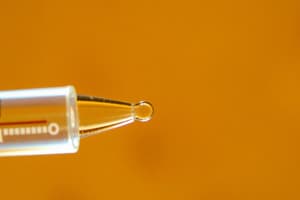Podcast
Questions and Answers
What is the term for microbes that are heat-loving?
What is the term for microbes that are heat-loving?
- Halophiles
- Psychrophiles
- Mesophiles
- Thermophiles (correct)
Where do chemoheterotrophs typically get their carbon source from?
Where do chemoheterotrophs typically get their carbon source from?
- Carbon dioxide
- Salt concentrations
- Proteins
- Organic molecules (correct)
What is the main function of nitrogen for organisms?
What is the main function of nitrogen for organisms?
- Photosynthesis
- Protein and nucleic acid synthesis (correct)
- Cell division
- Energy production
Which phase of growth is characterized by an equilibrium between cell division and death?
Which phase of growth is characterized by an equilibrium between cell division and death?
What is the primary method of bacterial reproduction?
What is the primary method of bacterial reproduction?
Which type of microbe can tolerate high salt concentrations?
Which type of microbe can tolerate high salt concentrations?
"Generation time" refers to:
"Generation time" refers to:
What happens during the log phase of bacterial growth?
What happens during the log phase of bacterial growth?
"Obligate aerobes" require:
"Obligate aerobes" require:
Flashcards are hidden until you start studying
Study Notes
Physical Requirements
- Microbes are classified into three categories based on temperature ranges: psychrophiles (cold-loving), mesophiles (moderate temperature–loving), and thermophiles (heat-loving)
- Most bacteria grow best at a pH value between 6.5 and 7.5
- In a hypertonic solution, most microbes undergo plasmolysis, except for halophiles that can tolerate high salt concentrations
Chemical Requirements
- All organisms require a carbon source, which can be an organic molecule (chemoheterotrophs) or carbon dioxide (autotrophs)
- Nitrogen is essential for protein and nucleic acid synthesis, and can be obtained from protein decomposition
Oxygen Requirements
- Organisms are classified into five categories based on oxygen requirements: obligate aerobes, facultative anaerobes, obligate anaerobes, aerotolerant anaerobes, and microaerophiles
Bacterial Division
- Bacteria normally reproduce through binary fission, where a single cell divides into two identical cells
- Generation time refers to the time required for a cell to divide or a population to double
Phases of Growth
Lag Phase
- During this phase, there is little or no change in the number of cells, but metabolic activity is high
Log Phase
- Bacteria multiply at the fastest rate possible under the provided conditions
Stationary Phase
- There is an equilibrium between cell division and death
Death Phase
- The number of deaths exceeds the number of new cells formed
Studying That Suits You
Use AI to generate personalized quizzes and flashcards to suit your learning preferences.




